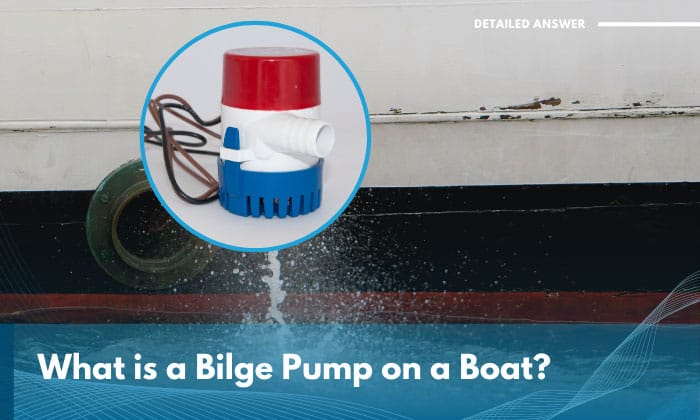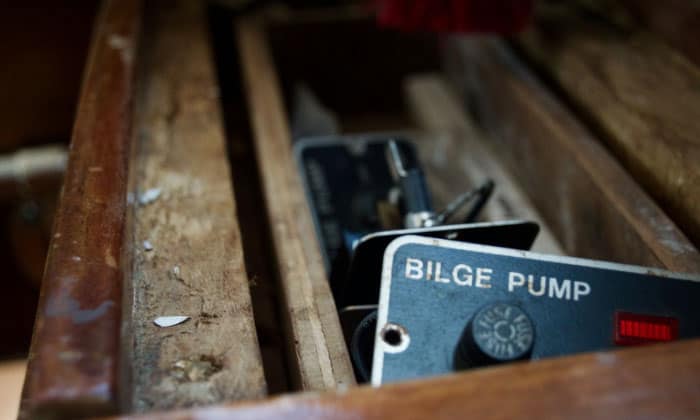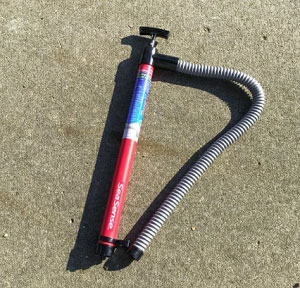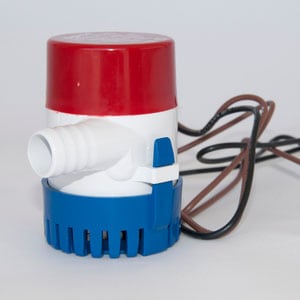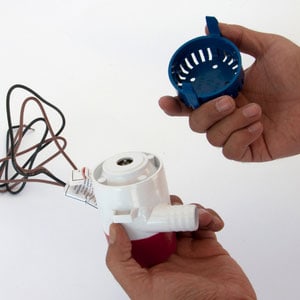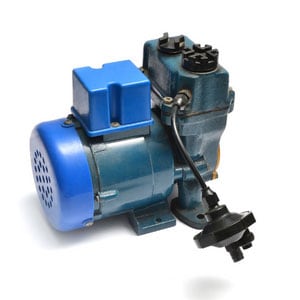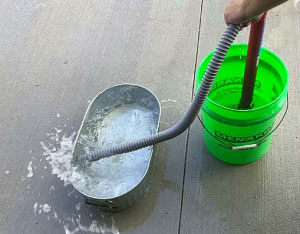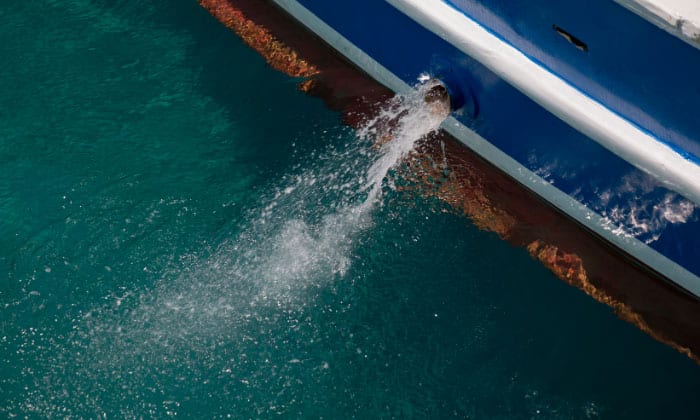Boats host many gadgets and tools that fulfill a specific or essential purpose. Naturally, a lot of first-time owners turn beady-eyed as to how each one performs.
“What is a bilge pump on a boat?” is but one of the many questions that get thrown around often. Well, if you’ve ever seen boaters in movies frantically scooping buckets of water when the hull starts filling up, marine bilge pumps can take their place.
They are used for the prevention of swamping and sinking without you having to do the muscle work, in short.
Table of Contents
How a Bilge Pump Works
As its name readily suggests, the bilge pump location on boat is located in the bilge. The bilge, in turn, is located in the bottom-most part of the hull, which is the area that’s the most prone to water accumulation.
The specific design of the boat’s bilge allows it to serve as a kind of “catch basin” to collect water safely without affecting the vessel’s stability. But, of course, this “tank” can only take in so much water (and oil, once it gets discharged by the engine).
Naturally occurring condensation, oil discharges, leaks, rain, waves splashing over the deck, and other water sources from other appliances onboard all add up to that. Therefore, it doesn’t take long before you need someone or something to take care of the accumulation.
What does bilge pump do to help? Once the entire system detects that a certain safe water level has been reached, the pump sucks the excess water (and/or oil) and expels them out of the boat, usually through discharge holes in the hull.
As you can see, the functionality and purpose of bilge pump are relatively straightforward. However, how it performs its function varies quite a bit.
The Main Types of Bilge Pumps
2 Kinds of Bilge Pumps Based On Method Of Operation
01 ManualBilge pumps can be categorized as either manual or automatic. With a manual, you have complete control over when turn on bilge pump, but once it starts up, it does the job for you, so it’s still essentially an electric bilge pump.
Usually, the bilge pump switch is located in the cockpit’s control panel for ease of operation.
The above manual pump should not be confused with a manual, hand-operated bilge pump that you need to keep pumping until it has expelled enough water. Although it sounds like a hassle, such models can empty 5 gallons of water within less than a minute.
Given their efficiency, manual bilge pumps can serve as a good alternative should your automatic 12V bilge pump fail suddenly.
02 ElectricObviously, that kind of manual bilge pump pales when compared to an automatic or electric one because, for one, the former can be tiring to operate consistently.
On the other hand, an automatic electric bilge pump kicks in and does its job with minimal to zero human intervention. I mentioned the water level detection above, and the float switch is usually responsible for it.
Keep in mind that the float switch only turns to the “ON” position once water touches it. This is why it’s crucial to keep it close to the same height you install the bilge pump or just a little higher. Note that this also applies to manually started bilge pumps.
3 Kinds of Bilge Pumps Based on Design
A cursory look at the market tells us that variety abounds in bilge pumps already. As boaters, we have the following types to choose from. They can be either manual or automatic.
01 CentrifugalAn impeller plays the major role of creating the necessary centrifugal force to pull and expel water out of the bilge. As long as it’s submerged in the water, the impeller and its affixed rings and blades will be able to create the required pressure to perform its function.
In the past, there may have been no self-priming centrifugal pumps available. But that’s no longer the case, as evidenced by the pumps designed by Azcue, which can effectively hold water inside their cavities so they can start functioning immediately.
They can even run completely dry for a time thanks to that, which is another bonus, as in other centrifugal pumps, this would mean a burnt impeller.
02 DiaphragmDiaphragm immediately denotes air, and that’s exactly what this bilge pump can pull, and it can do so without issues (unlike its counterpart above). It can pull both air and water into an inlet valve, which it then pushes out through an outlet valve.
This allows a diaphragm bilge pump to work without being submerged in water first, and what a lot of boaters find reliable about it.
A self-priming diaphragm ship bilge pump can be a good option for those having airlock problems (i.e., they struggle to run dry) with submersible centrifugal pumps.
03 PistonAlso called reciprocating pumps, they’re slightly similar in function to diaphragm pumps, but they use less efficient pistons instead.
As a result, piston pumps are not as popular as the first two above. This is because while they may be able to run dry, they lack the power and tend to struggle with debris buildups.
As is evident from the examples I shared, these pumps can be self-priming or submersible.
-
- Submersibles simply mean they need to be installed in the bilge and kick in once the float switch detects water, while certain self-priming pumps can be installed out of the bilge.
- Self-priming ones also carry the advantage of being able to start doing their job more quickly since they don’t have to be manually primed first, as long as they have water to get them started.
Considering almost any pump needs to be primed first for it to work
properly, such a feature not only saves time but effort as well.
Why Do You Need It?
I think I speak for every boater out there when I say that we don’t want our vessels to sink. Any properly installed bilge pump system can help to safeguard you from that possible tragedy.
To me, that already makes it a necessary component, regardless of the type of boat you own or your specific boating habits. A few boaters learn this lesson the hard way (i.e., when they take a hit and helplessly look on when their watercraft gets a leak).
A bilge pump alone may not be able to sufficiently take care of a major leak caused by immense damage in the hull, but it could be enough to buy you time or effectively contribute to a concerted effort.
Ways to Choose a Bilge Pump
- Weigh the pros and cons between manual and automatic bilge pump for boat as I’ve explained above. To summarize, a hand-operated pump can expel greater amounts, but high-end automatic pumps can achieve the same, provided that you have the budget for them.
- Remember that the larger your vessel, the more pump output you need.
- Look at the flow rate or pump output, in particular. As an example, a 21- to 26-footer will typically need two pumps that can expel 3,500 gallons of water per hour.
- Aim for the largest size bilge pump suitable for your boat. This only ups its pumping capacity and efficiency.
- More compact but no less efficient submersible varieties are a good small boat bilge pump choice because these vessels have a higher risk of sinking.
- Centrifugal pumps failing to run dry tend to be a common hitch while boating. If you don’t want to deal with this headache, it’s best to settle for a diaphragm or self-priming option from the get-go.
- Don’t cross out the unrivaled power of centrifugal pumps, though, if dry-running isn’t an issue.
- Don’t forget about what’s compatible with your boat’s electrical system. You can’t be pairing a 240V pump with your 115V battery.
Steps to Install a Bilge Pump
These steps are for submersible pumps only.
- Mount the bilge pump at the lowest point of the bilge possible. Make sure its outlet is facing the direction of the hose’s run.
- Feed the hose to the pump without twisting and hitting the other important components onboard. Keep it straight and free from unnecessary bends to achieve optimal flow rate.
- Drill a pilot hole for the discharge outlet on the side of the boat. It should always be above the waterline.
- Cut out the discharge outlet with a hole saw.
- Secure the skin fitting on the hole, then seal it with Sikaflex (a multipurpose sealant for construction use). Afterward, attach the hose to it.
- Start wiring the bilge pump. Strictly refer to the instructions manual when doing this, or hire an electrician to do it for you.
Frequently Asked Questions
When should I use a bilge pump on my boat?
Assuming it’s manually turned on, feel free to use it each time you see the need to remove excess water, oil, and chemical accumulation in the bilge. Automatic bilge pumps work entirely by themselves if installed correctly, so you don’t have to “use” them, per se.
You technically also have to install a bilge pump in your boat if it’s required by law in your country.
How many bilge pumps do you need?
16 to 26-foot boats tend to operate better with two pumps, while anything larger needs either three or four. I also can’t recommend investing in a hand-operated pump enough – a lot of boats and I can attest to its life-saving capabilities.
Conclusion
I hope I’ve given you a well-rounded answer to “What is a bilge pump on a boat?” with the facts I’ve outlined above. Considering its ability to keep your vessel’s bilge free from risky water buildup, a bilge pump is similar to the superheroes we tend to overlook and underappreciated.
They may not be a genuine “get out of jail” card if you’re stuck in a rut when out at sea, but what else can you possibly turn to once the shadow of a potential sinking looms?

“My intention from the first day establishing Boating Basics Online is to provide as much help as possible for boaters who want to experience a first safe and convenient trip. So feel free to join us and share your beautiful journeys to the sea!”

